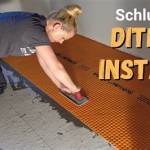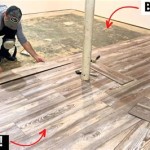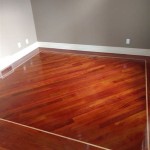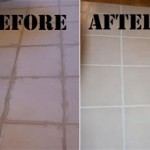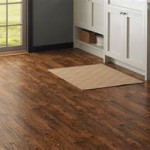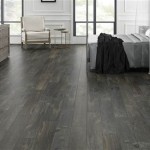How To Remove Tape Glue From Hardwood Floors
Adhesive residue, often left behind from tape, can be a persistent nuisance on hardwood flooring. Removing this sticky substance requires patience and the application of appropriate techniques to avoid damaging the wood's surface or finish. The process involves softening the adhesive and then gently lifting it away, followed by cleaning the affected area to restore the floor's original appearance. Several methods exist, each suited to different types of tape residue and hardwood finishes. This article provides a comprehensive guide to effectively and safely removing tape glue from hardwood floors.
Identifying the Type of Adhesive and Finish
Before initiating any removal process, it is crucial to identify the type of adhesive and the kind of finish on the hardwood floor. Different adhesives respond differently to various solvents and removal techniques. Masking tape adhesive, for example, may be more easily removed than the residue left by duct tape or packing tape. Similarly, the type of finish on the floor, such as polyurethane, varnish, or wax, will influence the choice of cleaning agents. Using an overly aggressive solvent on a delicate finish can lead to discoloration, dulling, or even complete removal of the finish. A small, inconspicuous test area is always recommended to assess the compatibility of any cleaning solution with the floor's finish.
The type of adhesive can often be inferred from the type of tape used. Residue that is soft and pliable is often from masking, painter's, or electrical tape. Stiffer, more stubborn residue may indicate the use of duct tape, packing tape, or certain types of carpet tape. The age of the residue also plays a role. Fresh adhesive is generally easier to remove than residue that has been allowed to harden and bond with the floor over an extended period.
Identifying the finish requires careful observation. Polyurethane finishes are generally durable and resistant to many solvents, while wax finishes are more sensitive and require gentler cleaning methods. Varnish finishes fall somewhere in between. Applying a small amount of mineral spirits or denatured alcohol to a cotton swab and gently rubbing it on an inconspicuous area can offer clues. If the finish softens or becomes sticky, it indicates a more delicate finish, potentially wax or a less durable varnish. If the finish remains unaffected, it is likely a more durable polyurethane coating.
Safe and Effective Removal Methods
Several methods can be employed to remove tape glue from hardwood floors, each with varying degrees of aggressiveness. Starting with the gentlest approach and gradually increasing the intensity is generally recommended to minimize the risk of damage. In all cases, proper ventilation is essential, especially when using solvents.
Warm Water and Soap: This is the mildest approach and is often effective for removing fresh or less stubborn adhesive residue. Combine warm water with a mild dish soap. Dampen a soft cloth with the soapy water and gently rub the affected area. Avoid saturating the wood, as excessive moisture can damage the finish. After rubbing, dry the area thoroughly with a clean, dry cloth. Repeat as necessary until the adhesive is removed.
Heat Gun or Hair Dryer: Applying gentle heat can soften the adhesive, making it easier to peel away. Use a heat gun or hair dryer on a low setting and direct the heat towards the adhesive residue. Maintain a safe distance to avoid overheating the wood. As the adhesive softens, gently scrape it away with a plastic scraper or a credit card. Wipe the area with a clean, damp cloth to remove any remaining residue.
Oil-Based Solutions: Many oils, such as vegetable oil, olive oil, or mineral oil, can effectively dissolve adhesive residue. Apply a small amount of oil to a clean cloth and gently rub it onto the sticky area. Allow the oil to sit for a few minutes to penetrate the adhesive. Then, wipe away the softened residue with a clean cloth. Follow up with a mild soap and water solution to remove any oil residue, and dry thoroughly.
Vinegar: White vinegar is a mild acid that can help dissolve adhesive residue. Dilute white vinegar with water in a 1:1 ratio. Dampen a clean cloth with the vinegar solution and gently rub the affected area. Allow the solution to sit for a few minutes before wiping away the residue with a clean cloth. Dry the area thoroughly. Avoid using vinegar on wax finishes, as it can damage them.
Rubbing Alcohol (Isopropyl Alcohol): Rubbing alcohol is a solvent that can dissolve many types of adhesive. Apply a small amount of rubbing alcohol to a clean cloth and gently rub the affected area. Avoid saturating the wood. As the adhesive dissolves, wipe it away with a clean cloth. Rubbing alcohol can potentially remove the finish from some hardwood flooring, so test in an inconspicuous area first. Ensure adequate ventilation when using rubbing alcohol.
Goo Gone or Similar Adhesive Removers: Commercial adhesive removers, such as Goo Gone, are specifically formulated to dissolve adhesive residue. Follow the manufacturer's instructions carefully. Apply a small amount of the remover to a clean cloth and gently rub the affected area. Allow the remover to sit for the recommended time before wiping away the residue. These products often contain strong solvents, so testing in an inconspicuous area is crucial. Ensure proper ventilation and wear gloves to protect your skin.
Mineral Spirits: Mineral spirits is a stronger solvent that can be effective for removing stubborn adhesive residue. Apply a small amount of mineral spirits to a clean cloth and gently rub the affected area. Work in a well-ventilated area and wear gloves to protect your skin. Mineral spirits can damage some finishes, so testing in an inconspicuous area is essential. After removing the residue, clean the area with a mild soap and water solution and dry thoroughly.
Ice: This method works well for removing hardened adhesives. Place a bag of ice or an ice pack on the adhesive residue for several minutes. The cold temperature will make the adhesive brittle and easier to shatter. Gently chip away with a plastic scraper or a credit card after freezing. The ice may need to be reapplied several to many times. Wipe the area with a clean, damp cloth to remove any remaining residue.
Post-Removal Cleaning and Maintenance
Once the adhesive residue has been successfully removed, it is important to clean the affected area to restore the floor's original appearance and protect the finish. The specific cleaning method will depend on the type of solvent or cleaning agent used during the removal process.
For areas cleaned with warm water and soap, simply rinse the area with clean water and dry thoroughly with a soft cloth. For areas cleaned with oil-based solutions, follow up with a mild dish soap and water solution to remove any oily residue. Rinse with clean water and dry thoroughly.
If rubbing alcohol, mineral spirits, or a commercial adhesive remover was used, cleaning with a wood floor cleaner specifically designed for hardwood floors is recommended. Follow the manufacturer's instructions carefully. These cleaners help remove any remaining solvent residue and restore the finish's luster.
After cleaning, consider applying a wood floor polish or wax to the affected area. This will help protect the finish and prevent future adhesive residue from sticking. Choose a product that is compatible with the floor's finish and follow the manufacturer's instructions carefully.
Regular maintenance is key to preventing future adhesive residue buildup and keeping hardwood floors looking their best. Sweep or vacuum the floors regularly to remove dust and debris. Clean spills immediately to prevent staining and adhesive bonding. Avoid using harsh chemicals or abrasive cleaners, as these can damage the finish. Consider using floor protectors under furniture legs to prevent scratches and dents.
Removing tape glue from hardwood floors requires a careful approach and the selection of appropriate techniques. By identifying the type of adhesive and the finish on the floor, starting with the gentlest removal method, and following up with proper cleaning and maintenance, the adhesive residue can be successfully removed without damaging the wood's surface or finish.

The Best Way To Remove Tape Residue From Hardwood Flooring Between Naps On Porch

4 Ways To Remove Adhesive From A Hardwood Floor Wikihow

How To Remove Glue From Wood Floors Pete S

4 Ways To Remove Adhesive From A Hardwood Floor Wikihow

Best Cleaner Ever To Remove Sticky Tape From Floors Etc Safe Easy

Easy Way To Remove Tape Residue Goo Gone

Removing Glue Tar Paper From Hardwood Floors Farmhouse Restoration Day In The Life

Easy Ways To Get Rid Of Carpet Tape On Wooden Floors Or Stairs Floor Sanding

4 Ways To Remove Adhesive From A Hardwood Floor Wikihow

How To Remove Glue From Wood Floors Pete S
See Also
